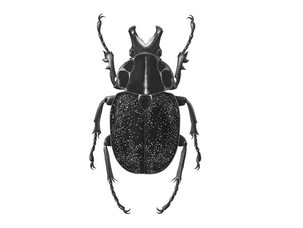OUR HISTORY
The Trinidad and Tobago Field Naturalists’ Club, a society for the study of Natural History, is one of the oldest clubs existing in Trinidad and Tobago, having being founded on 10th July 1891. The club lapsed into inactivity in 1907 but was reactivated in 1924 and, except for a short period of inactivity from 1948-1953, has remained active since then. The club operates under a constitution and set of rules and traditions. As part of the club’s 100th Anniversary Celebration, it was incorporated by an Act of Parliament (Act No. 17 of 1991).
The Club is a volunteer, non-profit organization. Its main objectives are to bring together persons interested in the study of natural history, the diffusion of knowledge thereof and the conservation of nature and natural resources.
Membership in the club is open to anyone who has an interest in nature and the natural environment. Approximately 250 members share interests in the natural environment such as birding, botany, photography, geology, research and scientific investigation, publication, conservation and environmental protection.
The TTFNC conducts an annual program of monthly meetings, lectures and field trips for the enjoyment and edification of its members.
The Club also publishes the following periodicals –
- Living World, a journal of scientific research in all fields of natural history relevant to Trinidad and Tobago. The Journal is published annually.
- Quarterly Bulletin, a quarterly newsletter for club members, containing articles on the natural history of Trinidad and Tobago and giving details of club activities.
In addition, the TTFNC sponsors a number of publications on the natural history and environment of the country. They may be obtained directly from the Club or from local bookstores.
OUR MISSION
To foster education and knowledge on natural history and to encourage and promote activities that would lead to the appreciation, preservation and conservation of our natural heritage.
OUR LOGO
The insect on our logo is the Inca beetle, Inca clathrata. The subspecies found in Trinidad is Inca clathrata quesneli, named after Dr. Victor Quesnel, a former President of the Club and currently an Honorary Member.
The image of the Inca beetle, with the words Natura maxime miranda in minimis, was first published in the Journal of the Field Naturalists’ Club of 1892.

CLUB RULES
A copy of the Club’s Bye-Laws can be downloaded here
MANAGEMENT COMMITTEE
The affairs of the Club are vested in and conducted by a Management Committee consisting of eight members elected at the Annual General Meeting held in January of each year. The committee consists of President, Vice President, Treasurer, Secretary, Assistant Secretary and three other members.
Members with specific skills also volunteer to lead the Special Interest Groups, or to form committees to focus on particular issues.
The 2025 Management Team comprises:
| President | Elizabeth Seebaran | 710-6978 |
| Vice-President | Laura Baboolal | 663-4169 |
| Treasurer | Selwyn Gomes | 624-8017 |
| Secretary | Kris Sookdeo | 749-9638 |
| Assistant Secretary | Chrisalene Dedier | 368-0851 |
| Committee Member | Dan Jaggernauth | |
| Committee Member | Rainer Deo | 680-4638 |
| Committee Member | Bryan Ramdeen | 702-9577 |
| Committee Member | Jeffrey Wong Sang | 231-9103 |
EDITORIAL COMMITTEES
Quarterly Bulletin: Laura Baboolal, Sarah Evelyn, Rupert Mends Living World:Kris Sookdeo, Trinidad and Tobago Field Naturalists’ Club, Trinidad and Tobago
AWARDS
The Trinidad and Tobago Field Naturalists’ Club was awarded a Medal of Merit (Gold) in recognition of Community Service in the field of Ecology (August 1980 Presidential Awards).
The Club also received an award in 1992 from the Caribbean Conservation Association for 100 years of Service in conservation of the environment.
CONTACT INFORMATION
For further information, please write to:
The Secretary,
Trinidad and Tobago Field Naturalists’ Club,
P.O. Box 642,
Port of Spain,
Trinidad and Tobago
Email: admin@ttfnc.org
